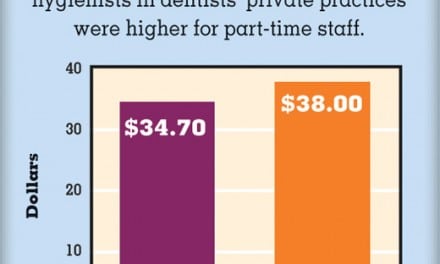As I have written before, the average dental student graduated in 2011 with $180,557 owed to their lender. If we throw out the 11.2% of seniors who graduated without any debt, the average dental student in the Class of 2011 graduated with a total debt of $203,374.
According to ADEA, the average dental student graduated in 2013 with a debt of $241,097 ($209,150 for students attending public schools and $283,978 for students attending private schools). In comparison, the ADA states that the average dental student graduated in 2013 with a debt of $221,000.
These are daunting numbers for a recent graduate, especially when we realize that our debt to income ratio may not be as sustainable as we thought while applying to dental school (tuition is increased almost annually, with 10% hikes in tuition not uncommon).
While the average general dentist made $192,000 in 2011, the average associate should expect to earn between $90,000 and $160,000 upon matriculation (here are three ways dental associates get paid).

Let’s pretend that you graduate with a $200,000 debt with an interest rate of 6.8%. Assuming a standard repayment plan of 10 years, your monthly payment will be $4603.21. Let’s then assume that your salary is $120,000. With this annual salary, it’s easy to see that you are committed to spending 46% of your annual income funding your student loan repayment schedule. Not to mention, if you are an employee making $10,000 per month, the interest of your student loan is no longer deductible – this means that state and federal governements will take their share before you have a chance to deduct the amount of money paid towards your loan’s interest from you annual salary prior to calculating your net income (obviously affecting the total amount you’ll owe in taxes).
How much would you owe Uncle Sam if you’re annual salary is $120,000? According to PayCheckCity.com, your net weekly pay after taxes (filing as a single taxpayer without any deductibles in California) would be $1,428.44 or $74,278.88 per year. Since you have to pay $55,238.52 to your student loan lenders per year, you get to take home just $19,040.36 during your first year of practice (an income less than the median annual salary for a full time dental assistant).
It’s important to realize that the above scenario applies to employees, not independent contractors. Independent contractors essentially own their own business and are afforded some tax breaks not available to employees.
For clarification, read Am I an Employee or Independent Contractor (linked below).
As of 2014, the maximum deductible for student loan interest is $2,500. For more information on student loan interest deductions, visit this publication by the IRS:Â http://www.irs.gov/publications/p970/ch04.html
Tools, tips, and more information:
- The Dental Loan Organizer and Calculator (a collaboration between ADEA and the Association of American Medical Colleges). You can learn more about this tool here:Â http://www.ada.org/en/publications/ada-news/2013-archive/august/dental-debt-management-tool-debuts
- Consolidating and Refinancing: http://www.ada.org/en/publications/ada-news/2014-archive/july/strategize_student_loan_debt
- Compensation for Associate Dentists:Â https://success.ada.org/en/practice/professional-pathways/employee/compensation-as-an-employee-or-associate-dentist
- Am I an employee or independent contractor? https://success.ada.org/en/practice/professional-pathways/employee/am-i-an-employee-or-an-independent-contractor
- Can I claim the Student Loan Interest Deduction:Â https://ttlc.intuit.com/questions/1901536-can-i-claim-the-student-loan-interest-deduction
- Dental Town: How to Pay off Your Dental School Debt:Â http://www.dentaltown.com/dentaltown/article.aspx?i=273&aid=3696






